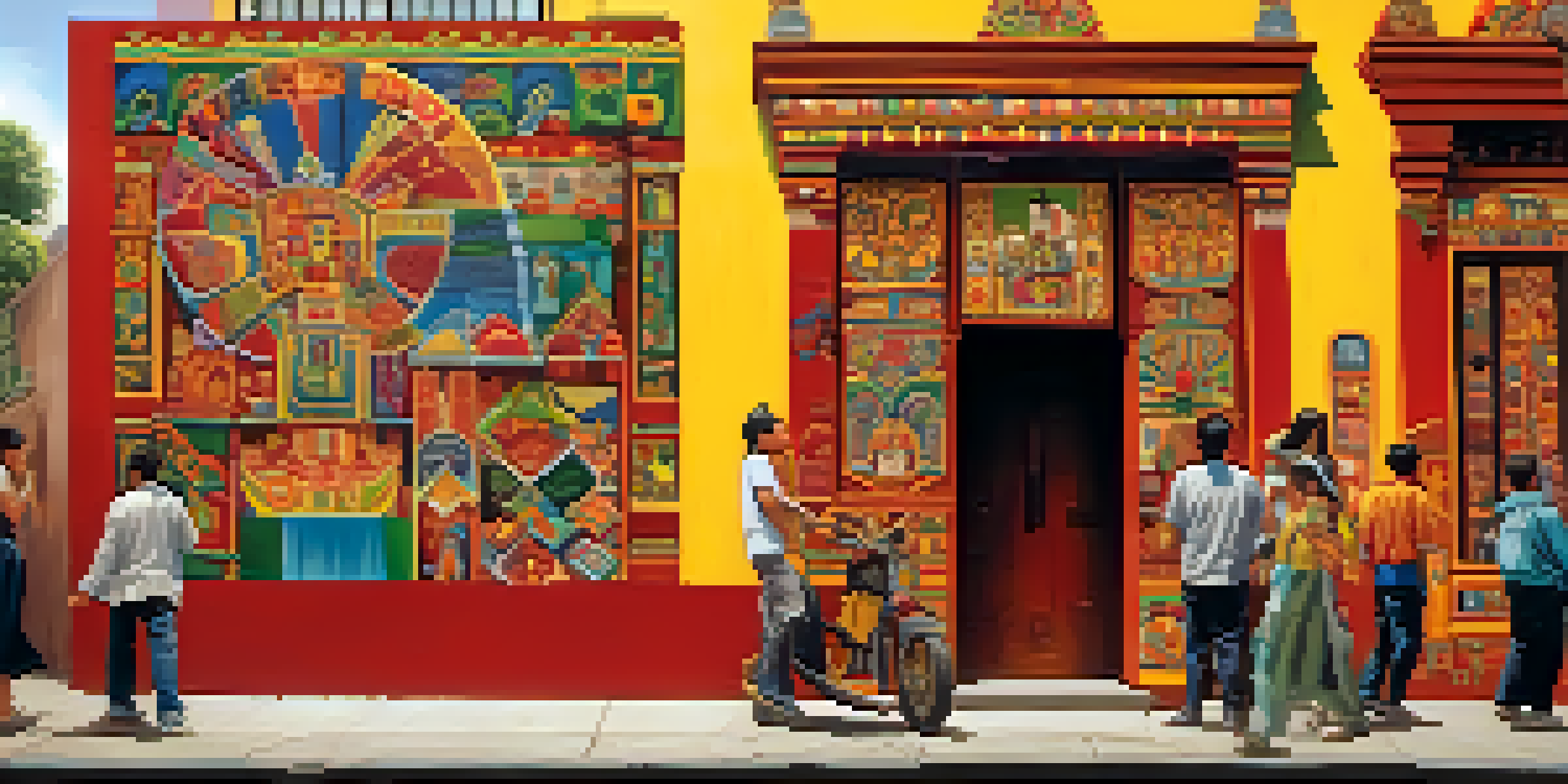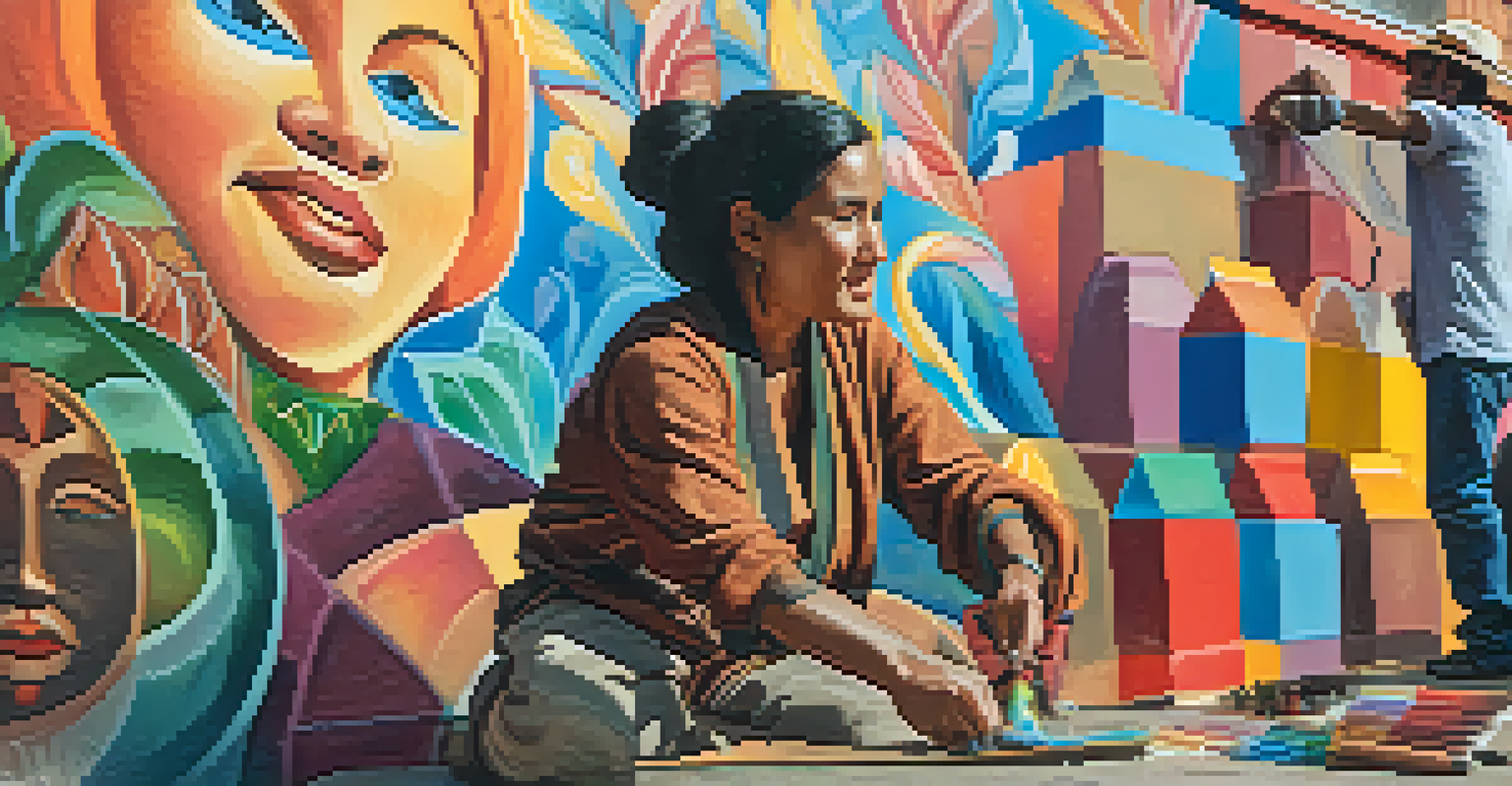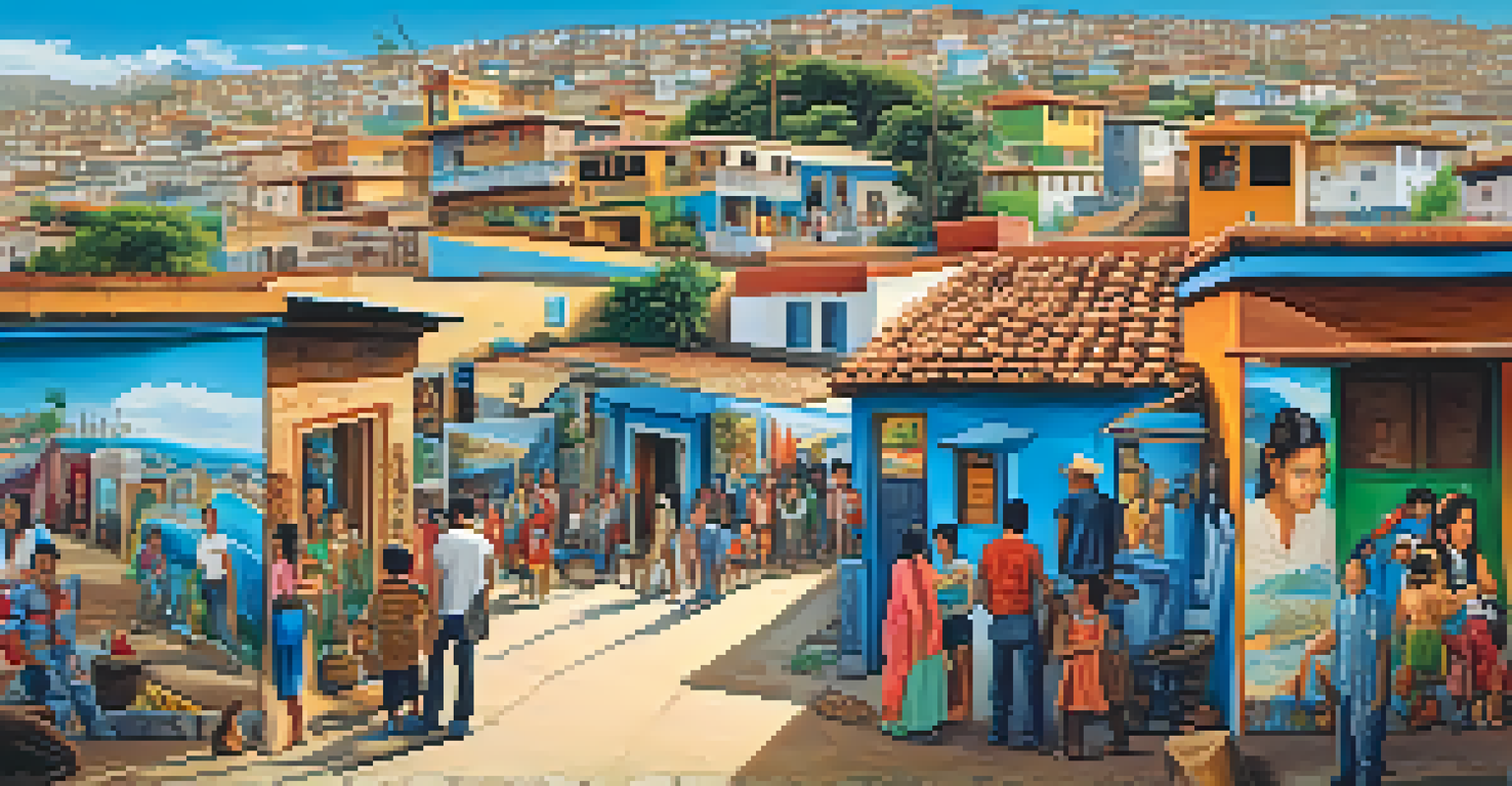The Cultural Significance of Murals in Peruvian Street Art

The Origins of Murals in Peru's Urban Landscape
Murals have a deep-rooted history in Peru, tracing back to ancient civilizations like the Incas. These early forms of art were not just decorative; they told stories, conveyed messages, and celebrated cultural heritage. As time progressed, these expressions transformed, adapting to contemporary issues while maintaining their historical significance.
Art is not a mirror to reflect the world, but a hammer with which to shape it.
In modern times, the rise of street art has breathed new life into this tradition. Artists began using public spaces as their canvas, turning walls into vibrant storytelling platforms. This evolution reflects a blend of past and present, creating a dialogue between different eras of Peruvian culture.
Today, murals are found in bustling cities like Lima and Cusco, where they serve as reminders of Peru's rich history and cultural diversity. By exploring the origins of these artworks, we can appreciate how they have woven themselves into the fabric of urban life.
Murals as a Voice for Social and Political Issues
In Peru, murals often serve as powerful tools for social and political commentary. Artists utilize their work to address pressing issues such as inequality, environmental concerns, and human rights. These murals not only beautify public spaces but also provoke thought and inspire action among viewers.

One notable example is the work of artists who depict the struggles of marginalized communities. By bringing these stories to the forefront, murals help to raise awareness and foster empathy. This connection between art and activism highlights the role of murals in advocating for social justice.
Murals Reflect Cultural Identity
Murals in Peru celebrate diverse cultural backgrounds and foster a sense of pride among local communities.
Furthermore, murals can unify communities, encouraging dialogue and collaboration. When people gather to appreciate or create art together, they build a sense of belonging and shared purpose. In this way, murals become more than just art; they are catalysts for change.
The Role of Murals in Cultural Identity and Pride
Murals play a crucial role in shaping cultural identity in Peru. They reflect the diverse backgrounds and experiences of the people, celebrating the country's rich tapestry of cultures. Artists often incorporate traditional motifs and symbols, linking contemporary art to historical roots.
Public art is a way of engaging the community in a dialogue about their identity and what they want their city to represent.
This celebration of identity fosters a sense of pride among locals. When residents see their stories and heritage represented on the walls of their neighborhoods, it strengthens their connection to their community. It also encourages future generations to embrace their cultural heritage.
Moreover, these murals offer a platform for artists to explore their own identities. By expressing personal narratives through their work, they contribute to a broader dialogue about what it means to be Peruvian in today's world. In this way, murals become a reflection of both individual and collective identities.
Murals as a Form of Community Engagement and Collaboration
The creation of murals often involves collaboration between artists and community members. This participatory approach fosters a sense of ownership and pride among locals, as they contribute their ideas and stories to the artwork. The process itself can be as meaningful as the final product.
Community engagement initiatives often bring together diverse groups, bridging gaps between different demographics. By working together, participants build relationships and understand each other's perspectives, reinforcing the social fabric of the neighborhood. This collaboration can transform a simple wall into a community landmark.
Art as a Tool for Social Change
Peruvian murals serve as powerful platforms for addressing social and political issues, inspiring community engagement and activism.
Additionally, these murals often serve as focal points for community events and gatherings. They become spaces where people come together to celebrate culture, art, and shared values. In this way, murals not only beautify the environment but also strengthen community bonds.
The Economic Impact of Murals on Local Communities
Murals can significantly boost local economies by attracting tourism and increasing foot traffic in neighborhoods. Visitors often seek out vibrant street art, making these areas popular destinations for exploration. This influx of people can lead to increased business for local shops and restaurants.
Moreover, the presence of art can enhance the appeal of a neighborhood, encouraging investment and development. Property values may rise as areas become known for their artistic vibrancy. This transformation can create new opportunities for local residents and businesses alike.
However, it's crucial to balance economic growth with the preservation of local culture. As neighborhoods evolve, it’s important to ensure that the unique identities reflected in the murals are maintained. This approach can lead to sustainable development that benefits both the community and its visitors.
The Influence of Technology on Mural Creation
In recent years, technology has revolutionized the way murals are created and shared. Artists now use digital tools to design their work, allowing for greater precision and creativity. This integration of technology can lead to stunning visual effects that capture the attention of passersby.
Additionally, social media plays a significant role in promoting murals and their artists. Platforms like Instagram provide a space for artists to showcase their work to a global audience. This exposure can lead to increased opportunities for collaboration and commissions, amplifying the reach of Peruvian street art.
Economic Boost from Street Art
Murals attract tourism and enhance local economies, transforming neighborhoods into vibrant destinations while preserving cultural identities.
However, while technology enhances the artistic process, it's important to maintain the authenticity of the mural's message. The essence of street art lies in its connection to the community and its ability to evoke emotions. As artists embrace new tools, they must also stay rooted in the cultural narratives that inspire their work.
The Future of Murals in Peruvian Street Art
As Peruvian street art continues to evolve, the future of murals looks promising. Artists are exploring new themes and styles, pushing the boundaries of creativity while remaining grounded in cultural narratives. This ongoing evolution ensures that murals will remain relevant and impactful.
Moreover, there is a growing recognition of the importance of preserving these artworks. Initiatives to protect and restore murals are gaining momentum, emphasizing their cultural significance. As communities rally around their local art, the value of murals as heritage increases.

Ultimately, the future of murals in Peru is intertwined with the stories they tell and the communities they represent. As artists and residents collaborate to create new works, they will continue to shape the urban landscape and leave a lasting legacy for future generations.